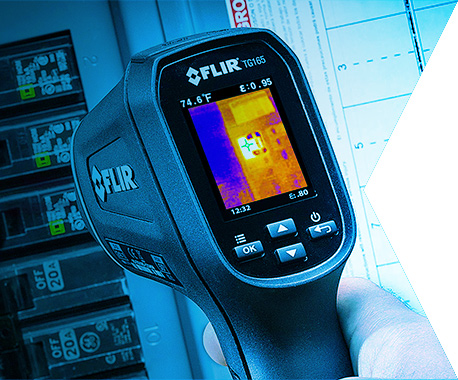K1 NEWS
- Madar Al Kone signs MOU with GCC
- Madar Al Kone (K1 Group), announced today that they have moved their office to a new location in Erbil, Kurdistan.
- K1 Design & Development Solutions is pleased to announce the launching of TarinNet branding and website development.
- K1 Security & Mobility has performed live demonstrations of Flir's long range radar and thermal cameras integrated system in the presence of His Excellence the Minister of Interior Mr. Abdulkarim Sultan Sinjari (Karim Sinjari).
- K1 Security & Mobility has signed a contract with Erbil International Airport General Security Directorate for the supply and training of Flir's FIDO X3 Handheld explosives detector.
- K1 Security & Mobility has signed a contract with Erbil International Airport General Security Directorate for the Maintenance and Support of their Information Technology department.
- K1 Security & Mobility has signed a contract with Kalegran B.V. for the Maintenance of the HSE systems at Kalegran's Head office Building in Erbil.
- K1 Design & Development Solutions is pleased to announce the launching of Ronahee Foundation website.
- K1 Design & Development Solutions is pleased to announce the completion of Trust Holding branding concept.
- K1 Design & Development Solutions is pleased to announce that we have completed the branding and website development for TarinMax.
- K1 Design & Development Solution has submitted to Ster Group a proposal for a complete rebranding of their corporate identity.
- Erbil stock exchange (ESX) has entered into an agreement with KITS Company
- K1 Design & Development Solutions signed an agreement with Diwan Lounge and Newroz Lounge for a complete branding assignment
- K1 Design & Development Solutions signed an agreement with Al Afandi Restaurant to create its full suite of branding and identity
- K1 Design & Development Solutions signed an agreement with Fairouz Group for a new concept to the MUNCH CAFE & RESTAURANT & for undertaking all printing for ONYX RESTAURANT & LOTUS LOUNGE
- K1 Security & Mobility has entered into an Authorized Distributor Agreement with Honeywell Middle East FZE, the leading global manufacturer of sophisticated electronic security systems and solutions
- K1 Security & Mobility has signed a contract with Kalegran Ltd for the installation of an advanced, state-of-the-art fire alarm and fire fighting systems
K1 NEWS
- Madar Al Kone signs MOU with GCC
- Madar Al Kone (K1 Group), announced today that they have moved their office to a new location in Erbil, Kurdistan.
- K1 Design & Development Solutions is pleased to announce the launching of TarinNet branding and website development.
- K1 Security & Mobility has performed live demonstrations of Flir's long range radar and thermal cameras integrated system in the presence of His Excellence the Minister of Interior Mr. Abdulkarim Sultan Sinjari (Karim Sinjari).
- K1 Security & Mobility has signed a contract with Erbil International Airport General Security Directorate for the supply and training of Flir's FIDO X3 Handheld explosives detector.
- K1 Security & Mobility has signed a contract with Erbil International Airport General Security Directorate for the Maintenance and Support of their Information Technology department.
- K1 Security & Mobility has signed a contract with Kalegran B.V. for the Maintenance of the HSE systems at Kalegran's Head office Building in Erbil.
- K1 Design & Development Solutions is pleased to announce the launching of Ronahee Foundation website.
- K1 Design & Development Solutions is pleased to announce the completion of Trust Holding branding concept.
- K1 Design & Development Solutions is pleased to announce that we have completed the branding and website development for TarinMax.
- K1 Design & Development Solution has submitted to Ster Group a proposal for a complete rebranding of their corporate identity.
- Erbil stock exchange (ESX) has entered into an agreement with KITS Company
- K1 Design & Development Solutions signed an agreement with Diwan Lounge and Newroz Lounge for a complete branding assignment
- K1 Design & Development Solutions signed an agreement with Al Afandi Restaurant to create its full suite of branding and identity
- K1 Design & Development Solutions signed an agreement with Fairouz Group for a new concept to the MUNCH CAFE & RESTAURANT & for undertaking all printing for ONYX RESTAURANT & LOTUS LOUNGE
- K1 Security & Mobility has entered into an Authorized Distributor Agreement with Honeywell Middle East FZE, the leading global manufacturer of sophisticated electronic security systems and solutions
- K1 Security & Mobility has signed a contract with Kalegran Ltd for the installation of an advanced, state-of-the-art fire alarm and fire fighting systems
 K1 Security & Mobility
K1 Security & Mobility
SERVICES

LONG RANGE SUVEILLANCE
K1-S&M is an authorized partner of Flir systems
- Thermal imaging technology for long-range surveillance is rapidly evolving giving rise to a multitude of choices in a highly competitive environment.
- There are two main systems currently available - cooled vs. un-cooled, with diametrically divergent features and cost structures.
- At the heart of the cooled thermal imaging system is the complex integration of the imaging sensor with a cry cooler which lowers senor temperature to cryogenic temperature levels.
- The cry cooler is a precision instrument designed to reduce thermally-induced noise, but has a useful life of 8,000-10,000 hours of operation.
- Cooled thermal imaging cameras are the most sensitive type to small differences in scene temperature.
- The camera produces images in the midwave infrared band where thermal contrast is high due to blackbody physics. They can also be designed to work in the long wave infrared band.
- At the heart of the uncooled thermal imaging system is the micro bolometer, a tiny vanadium oxide resistor with a large temperature coefficient.
- An uncooled thermal imaging camera allows change in scene temperature to trigger a change in the bolometer temperature which are converted to electrical signals and processed into an image.
- The camera produces images in the long wave infrared band from 7 to 14 microns in wavelength.
- Lacking the complex and costly components that define the cooled thermal imaging system, cameras utilizing uncooled thermal imaging technology are generally less expensive and easier to manufacture.
- Few moving parts means that cameras are able to operate trouble free for many years, requiring little or no maintenance.
- The cooled thermal imaging systems have the advantage over uncooled thermal imaging systems when standoff ranges get out to 5 kilometers or greater and the key lies in the in the lens.
- As effective range requirements increase, the lenses for uncooled camera systems become bulky and expensive compared to cooled camera systems with an equivalent focal length.
- The difference in cost between the two systems is driven by the lens, and the crossover point (currently around 350mm for typical systems) is changing in the rapidly emerging global IR optics market.
- The light gathering power of the lens, being the ratio of the focal length to the lens diameter of the front lens element, or f/number, is a crucial parameter. Increasing the focal length requires an increase in the diameter of the front lens element in order to keep the f/number constant.
- An uncooled camera must be run at a low f/number (typically 1.4-2) to have comparable sensitivity to a cooled camera. Higher f/numbers reduce the uncooled camera’s sensitivity requiring a front lens element.
- Front lens elements are very expensive to manufacture.
- Cooled camera systems can operate at f/numbers of f/4 or higher without compromising sensitivity because exposure time or integration time is cooled to compensate for reduced light throughput.
- The integration times needed to operate with f/5 lenses are less than 10msec, enabling 50/60Hz and higher video frame rate in line with security industry standards.
- Long range thermal infrared surveillance requires long focal length lenses. Despite the initial cost advantage of the uncooled system and its operational limits, the cooled system have a built in advantage that tends to favor it despite the higher initial cost.
- The decision as to which system one should choose and adopt will, as always, on your individual requirements.
HANDHELD EXPLOSIVE DETECTOR
- The security industry is a major beneficiary of today’s rapidly evolving advancements in explosive-detection technology designed to make our world a safer place.
- The advancements were driven by the need to develop sensors capable of detecting trace explosive materials that are embedded into small, rugged, weather-resistant, easy to handle and operate devices.
- The demand for such devices has spawned a rapidly growing industry where a large number of manufacturers, applying alternative technologies, compete with a variety of similar products to capture the interest of consumers.
- We at FLIR have been in the explosive detection business for some time now and have developed handheld detectors that are smaller, lighter and that feature a wide range of capabilities.
- Fido X3, one of our advanced family of hand-held explosive detection units, utilizing technology based on amplifying fluorescent polymer (AFP) and ion mobility spectroscopy (IMS), is capable of detecting traditional, improvised and homemade explosive materials in trace amounts (in the pictograms to Nano grams range) within 15 seconds.
- The polymer’s optical properties interact with the explosive materials and the change is measured by the device which reports the detection event.
- The unit has an eight-hour battery, is capable of starts in less than five minutes and requires no calibration. Only minimal training is required for use. One hour on how to operate the device and three hours on the subject of trace explosives, what to look for and where.
- The units are considered in the front line of the fight against terrorism and are currently in operations by specialized law enforcement agencies around the world. It is designed to deliver aviation checkpoint levels of security with considerable ease and greater effectiveness.



